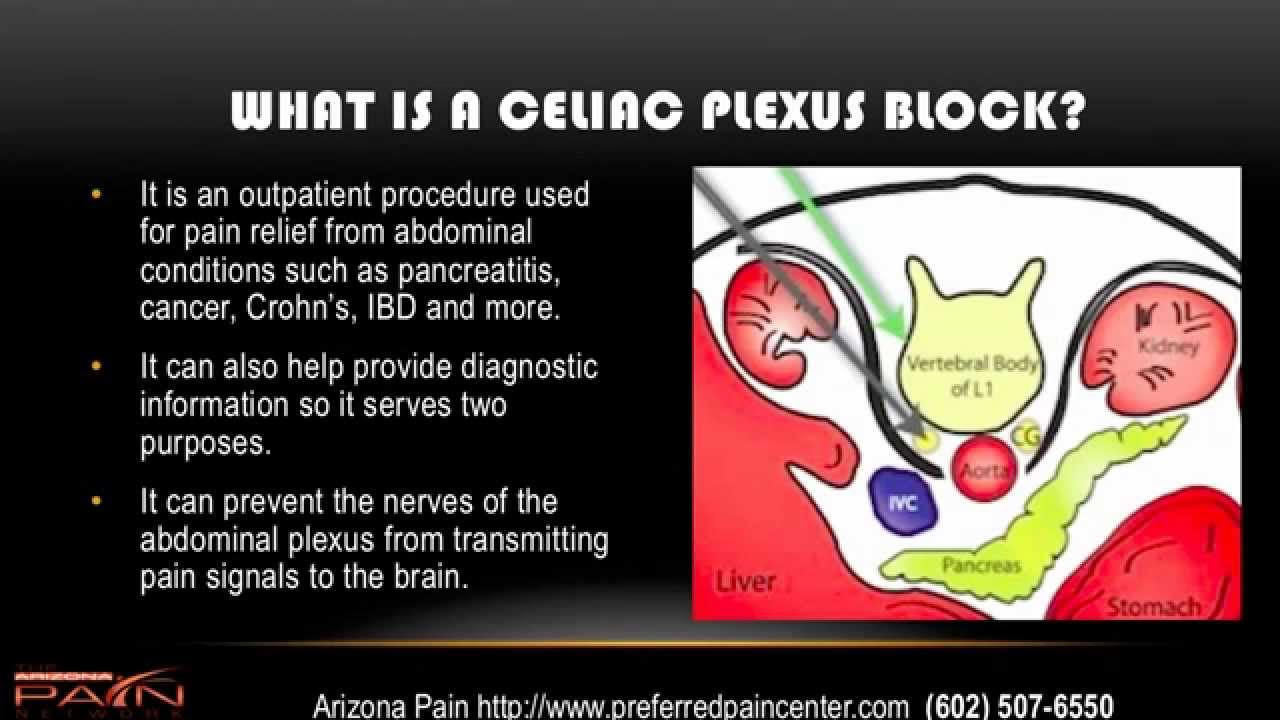Home → Celiac plexus block

Celiac plexus blocks are injections of pain medication that help relieve abdominal pain, commonly due to cancer or chronic pancreatitis.
The celiac plexus is a bundle of nerves that surrounds the aorta, the main artery into your abdomen. Blocking these nerves from carrying pain information can help you stop feeling pain in your abdomen.
First, you’ll be given an intravenous medication to relax you. Then, you’ll lie on your stomach on an x-ray table.
The doctor will numb an area of skin on your back with a local anesthetic. Then, guided by an x-ray, he or she will:
How long the pain relief lasts is different for each person. For some, celiac plexus blocks can relieve pain for weeks. For others, the relief can last years. Many can return to their normal activities.
Usually people need a series of injections to continue the pain relief. Sometimes it takes only two injections; sometimes it takes more than 10.
The risk of complication from a celiac plexus block is very low. However, there could be bruising or soreness at the injection site. Serious complications, including infection, collapsed lung, nerve damage and bleeding, are uncommon.
Side effects can include:
Your abdomen may feel warm or “different,” and you may begin to feel less abdominal pain. Your abdominal wall or leg may feel numb or weak, but this feeling will subside when the anesthetic wears off.
You can continue your regular diet and medications immediately, but do not drive or do any rigorous activity for 24 hours after the procedure. Take it easy. You can return to your normal activities the next day.
The nerve block may last several days, but it may last longer with each repeat injection.
A celiac plexus block may be right for you if you have chronic abdominal pain — especially linked to abdominal cancers — which does not respond to other pain medication. There’s a better chance of a block relieving your pain if you have the procedure earlier in your illness.